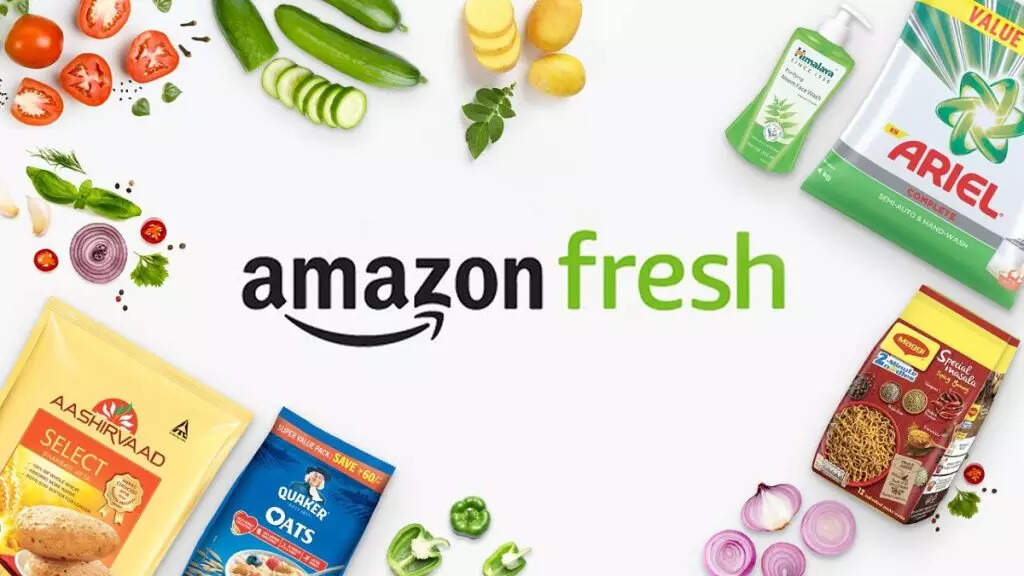Amazon India has introduced a new shelf monitoring solution called Johari. This is a Machine Learning (ML) powered farm-to-fridge quality assurance system for fresh produce. With this launch, the e-commerce giant aims to enable its sellers to meet the consumer demands for high-quality fresh fruits and vegetables on Amazon Fresh.
Amazon’s Johari shelf monitoring system: Availability
The shelf monitoring solution is avaiable for Amazon Fresh sellers as the Johari mobile app.The app supports both manual monitoring and automated monitoring using cameras installed on top of produce shelves.
Amazon’s Johari shelf monitoring system: How it works
In manual monitoring, operators use the Johari app to submit a produce crate image taken from their smartphone. The shelf monitoring solution assesses the image for quality and if acceptable analyses the image to detect defects and uses grading logic to highlight the items that don’t meet the quality criteria and need to be culled. Using this information, operators cull the highlighted produce and then update the app with their action.
Operators can also see the details of defect types in the app. The manual monitoring solution takes around 6 seconds on average to assess a crate of produce items. In automated monitoring, the experience is similar to manual monitoring except that the images are taken by the camera in-store/site shelves, at periodic intervals that can be controlled by the site operator for each product.
This new system uses neural networks and rule-based grading for monitoring and maintaining fresh produce quality. The tool is powered by vision models and Wi-Fi-enabled IoT cameras to detect pre-determined defects in fruits and vegetables using the image of the crate, as an input.
Amazon’s Johari shelf monitoring system: Availability
The shelf monitoring solution is avaiable for Amazon Fresh sellers as the Johari mobile app.The app supports both manual monitoring and automated monitoring using cameras installed on top of produce shelves.
Amazon’s Johari shelf monitoring system: How it works
In manual monitoring, operators use the Johari app to submit a produce crate image taken from their smartphone. The shelf monitoring solution assesses the image for quality and if acceptable analyses the image to detect defects and uses grading logic to highlight the items that don’t meet the quality criteria and need to be culled. Using this information, operators cull the highlighted produce and then update the app with their action.
Operators can also see the details of defect types in the app. The manual monitoring solution takes around 6 seconds on average to assess a crate of produce items. In automated monitoring, the experience is similar to manual monitoring except that the images are taken by the camera in-store/site shelves, at periodic intervals that can be controlled by the site operator for each product.
This new system uses neural networks and rule-based grading for monitoring and maintaining fresh produce quality. The tool is powered by vision models and Wi-Fi-enabled IoT cameras to detect pre-determined defects in fruits and vegetables using the image of the crate, as an input.
Johari can detect the count of visible items of produce and identify specific visual defects such as cuts, cracks, pressure damage and more. Amazon has developed two types of models- one for detecting each item in the crate and counting the total number of items, and the second for identifying the defect classes present in each item. Both these models are trained using annotated defects in Millions of produced images.
“Grocery continues to be one of the fastest-growing categories in India,” Amazon said in a press note.
Amazon Fresh is available across 60+ cities and offers a full basket selection of (wet and dry grocery) products delivered to consumers at their preferred delivery slots.
Denial of responsibility! Swift Telecast is an automatic aggregator of the all world’s media. In each content, the hyperlink to the primary source is specified. All trademarks belong to their rightful owners, all materials to their authors. If you are the owner of the content and do not want us to publish your materials, please contact us by email – swifttelecast.com. The content will be deleted within 24 hours.


